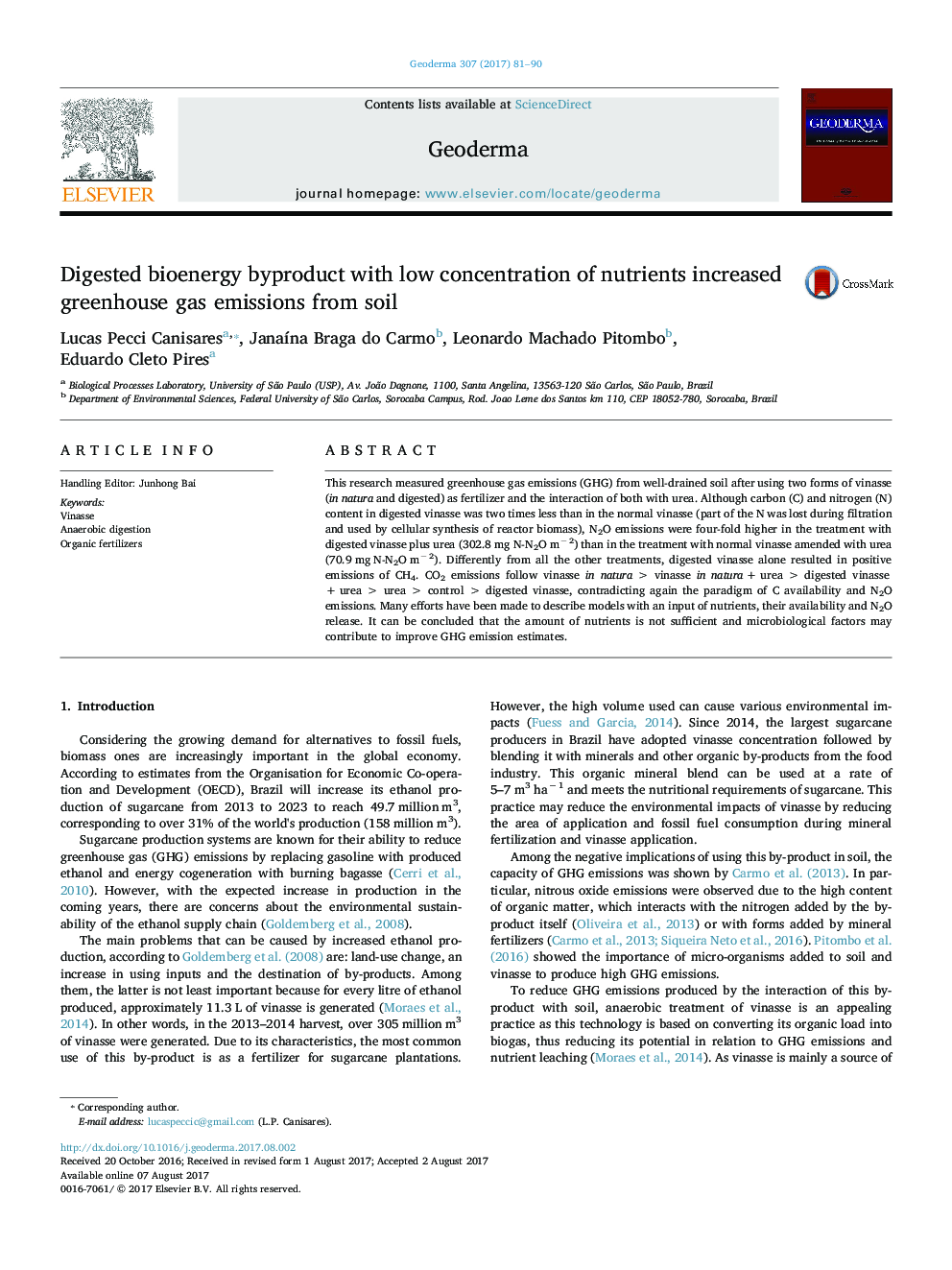| کد مقاله | کد نشریه | سال انتشار | مقاله انگلیسی | نسخه تمام متن |
|---|---|---|---|---|
| 5770232 | 1629410 | 2017 | 10 صفحه PDF | دانلود رایگان |
- Anaerobically digested vinasse would be an alternative to mitigate GHG emissions.
- Only the digested bioenergy byproduct stimulated CH4 emission from soil.
- Urea plus vinasse: digested vinasse stimulated the N2O emission.
- Urea plus vinasse: 4-fold GHG emission to the digested vinasse over the normal vinasse.
This research measured greenhouse gas emissions (GHG) from well-drained soil after using two forms of vinasse (in natura and digested) as fertilizer and the interaction of both with urea. Although carbon (C) and nitrogen (N) content in digested vinasse was two times less than in the normal vinasse (part of the N was lost during filtration and used by cellular synthesis of reactor biomass), N2O emissions were four-fold higher in the treatment with digested vinasse plus urea (302.8 mg N-N2O mâ 2) than in the treatment with normal vinasse amended with urea (70.9 mg N-N2O mâ 2). Differently from all the other treatments, digested vinasse alone resulted in positive emissions of CH4. CO2 emissions follow vinasse in natura > vinasse in natura + urea > digested vinasse + urea > urea > control > digested vinasse, contradicting again the paradigm of C availability and N2O emissions. Many efforts have been made to describe models with an input of nutrients, their availability and N2O release. It can be concluded that the amount of nutrients is not sufficient and microbiological factors may contribute to improve GHG emission estimates.
Journal: Geoderma - Volume 307, 1 December 2017, Pages 81-90
